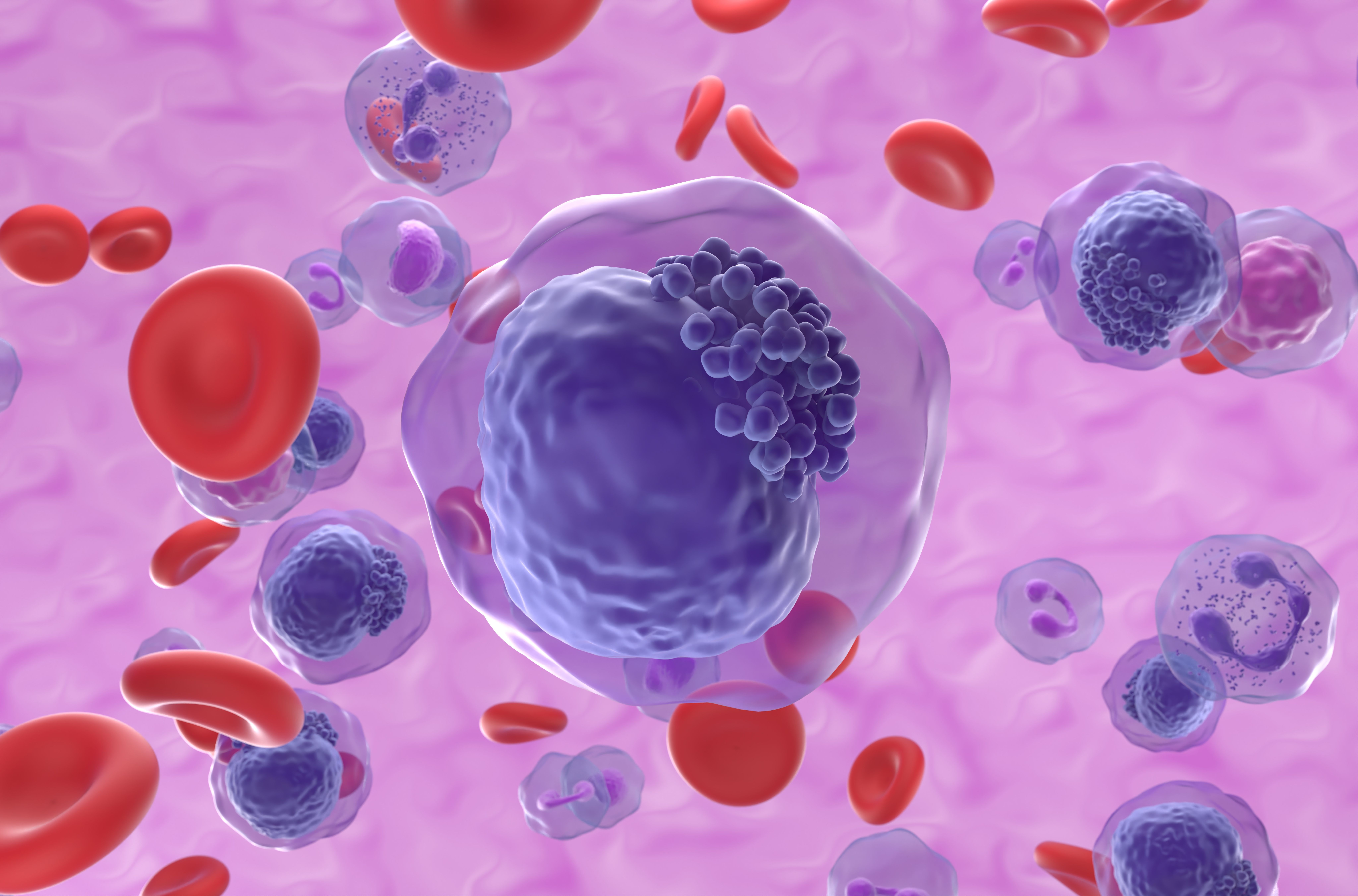- Center on Health Equity & Access
- Clinical
- Health Care Cost
- Health Care Delivery
- Insurance
- Policy
- Technology
- Value-Based Care
AML Treatment Has Shifted Toward More Personalized Approach
Recent years have brought a more targeted approach to treating acute myeloid leukemia (AML) based on accumulating knowledge about the genetic makeup of the heterogenous disease.
Researchers of a new paper in JAMA Oncology have characterized the shift in the acute myeloid leukemia (AML) treatment landscape in recent years, with the increasing adoption a more targeted approach based on accumulating knowledge about the genetic makeup of the heterogenous disease.1
Years of research in AML have determined the most commonly altered genes in the disease to include FLT3, NPM1, DNMT3A, IDH1, IDH2, TET2, RUNX1, NRAS, and TP53. Since the first approval of a molecularly targeted treatment in AML in 2017 with the approval of midostaurin (Rydapt),2 numerous other targeted approaches have entered the AML sphere.3
AML cells | image credit: LASZLO - stock.adobe.com

“Over the past decade, therapy for patients with AML has increasingly become tailored to both the disease molecular profile and patient- and disease-specific characteristics,” explained the researchers.1 “Novel orally administered targeted agents pose coverage challenges and may necessitate parity-like legislative approaches to ensure patients can receive standard-of-care therapies regardless of administrative route. Drug development in AML is proceeding at a vigorous pace with continued exploitation of disease biologic factors, such as with the ongoing investigation of menin inhibitors against KMT2A and NPM1c variants.”
One of the biggest considerations for treatment in the front-line setting is the ability to receive chemotherapy. With an older patient population, a sizable amount of patients with AML are unfit for chemotherapy, both due to age and co-existing comorbidities. For these patients, the treatment approach hinges upon BCL2 inhibitor venetoclax (venclexta). Receiving approval for first-line, unfit patients in 2020, venetoclax is used in combination with hypomethylating agents (HMAs) and has shown efficacy across molecular subgroups, including those with FLT3 or IDH variants. In 2022, ivosidenib (tibsovo) gained approval for patients with IDH1-altered disease after showing improved event-free survival in the phase 3 AGILE trial.
Even in an era of targeted treatments, chemotherapy still plays a large role for certain patients with AML. Those fit for chemotherapy include younger patients, and older patients with a good performance status, limited comorbidities, and good-risk disease. For these patients, cytarabine and an anthracycline are the cornerstone of a chemotherapy approach. Antibody-drug candidate (ADC) gemtuzumabozogamicin (mylotarg) may be added to induction chemotherapy based on promising data on its use. A meta-analysis of 5 randomized controlled trials showed 5-year overall survival of 76.3% with gemtuzumabozogamicin vs 55.2% without gemtuzumabozogamicin (HR, 0.47; 95% CI, 0.31-0.73; P < .001). FLT3 inhibitors, such as midostaurin and quizartinib (vanflyta), are also used.
Within the relapsed and refractory (R/R) setting, treatment varies due to a lack of standardized approach, explained the researchers.
“Despite the major headway in unraveling the byzantine molecular pathogenesis of AML, and the identification of rational therapies, relapse is more common, with a 5-year [overall survival] of 10% in patients whose AML returns,” described the researchers. “Currently, there is no consensus on a uniform reinduction strategy in patients who can tolerate intensive chemotherapy and who do not have actionable variants, and the choice of treatment is often based on the [complete remission] duration with the prior therapy. If the first remission duration is greater than 1 year, it is reasonable to reinduce with the same initial regimen. However, the likelihood of treatment response decreases with each relapse.”
Similar to front-line disease, chemotherapy is used in patients deemed fit for the treatment. Intensive chemotherapy regimens include itoxantrone, etoposide, and cytarabine combination; fludarabine, cytarabine, granulocyte colony-stimulating factor, and idarubicin combination; or high-dose cytarabine. For patients who received chemotherapy in front line but cannot receive the treatment for their R/R disease, the treatment approach includes HMAs with venetoclax, though mediation duration of response typically does not surpass 1 year.
Two IDH1 inhibitors have entered the market over the last 5 years, with the approval of ivosidenib and olutasidenib (rezlidhia) for R/R patients with IDH1-altered disease. FLT3-targeted treatment is also available gilteritinib (xospata).
References:
- Venugopal S, Sekeres M. Contemporary management of acute myeloid leukemia: A review. JAMA Oncol. Published online August 8, 2024. doi:10.1001/jamaoncol.2024.2662
- Levis M. Midostaurin approved for FLT3-mutated AML. Blood. 2017;129(26):3403-3406.
- Targeted therapy drugs for acute myeloid leukemia (AML). American Cancer Society. Accessed August 13, 2024. https://www.cancer.org/cancer/types/acute-myeloid-leukemia/treating/targeted-therapy.html
